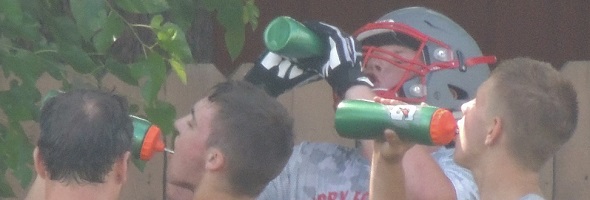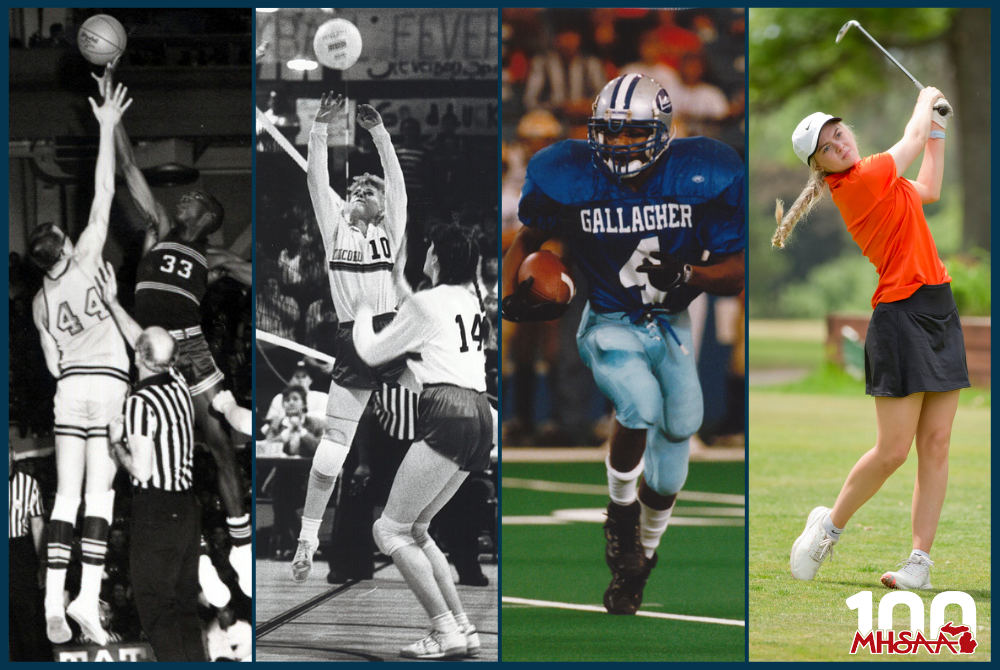
Athletes: Get Ready to Beat the Heat
August 2, 2019
By Geoff Kimmerly
Second Half editor
While this summer may have seemed to arrive late in many parts of Michigan, the warm and sunny weather over these last few weeks has provided another reminder that student-athletes must prepare for training in hot weather that traditionally accompanies the beginning of August as MHSAA member schools prepare to begin fall sports practices this month.
Each year, the MHSAA provides information to its member schools to help them prepare for hot weather practice and game conditions during the late summer and early fall. Practices for cross country, football, Lower Peninsula girls golf, boys soccer and Lower Peninsula boys and Upper Peninsula girls tennis can begin August 12, with volleyball and Lower Peninsula girls swimming & diving able to start August. 14.
The “Health & Safety” page of the MHSAA Website has a number of links to various publications and information including guidelines for acclimatization from the National Athletic Trainers’ Association and recommendations on proper hydration from the National Federation of State High School Associations (NFHS). The preseason publication Heat Ways also is available for download and includes valuable information on heat management in addition to requirements and resources regarding head injuries and sudden cardiac arrest.
The first days of formal practices in hot weather should be more for heat acclimatization than the conditioning of athletes, and practices in such conditions need planning to become longer and more strenuous over a gradual progression of time. Schools also must consider moving practices to different locations or different times of day, or change practice plans to include different activities depending on the conditions. Furthermore, football practice rules allow for only helmets to be worn during the first two days, only shoulder pads to be added on the third and fourth days, and full pads to not be worn until the fifth day of team practice.
The MHSAA advises student-athletes to make sure to hydrate all day long – beginning before practice, continuing during and also after practice is done. Water and properly-formulated sports drinks are the best choices for hydration, while energy drinks, high-carbohydrate fruit juices (greater than eight percent carb content), carbonated and caffeinated beverages are among those that should be avoided.
A number of member schools follow the MHSAA’s Model Policy for Managing Heat & Humidity, which while not mandated for member schools was adopted as a rule for MHSAA postseason competition in 2013. The plan directs schools to begin monitoring the heat index at the activity site once the air temperature reaches 80 degrees, and provides recommendations when the heat index reaches certain points, including ceasing activities when it rises above 104 degrees. (When the temperature is below 80 degrees, there is no combination of heat and humidity that will result in a need to curtail activity.) The model heat & humidity policy is outlined in a number of places on the MHSAA Website, including as part of Heat Ways.

Century of School Sports: Let the Celebration Begin
By
Geoff Kimmerly
MHSAA.com senior editor
August 28, 2024
A milestone is an opportunity to look back, and we’ll surely dip into our history plenty during the 2024-25 school year as the Michigan High School Athletic Association celebrates 100 years of educational athletics.
But an anniversary of this magnitude also provides an ideal opportunity – at an ideal time in MHSAA history – to explain how we provide opportunities for students to participate in sports, and why that work remains vital.
Beginning next week and continuing through our final championship events next spring, we’ll be telling several of these stories as part of our “Century of School Sports” series on MHSAA.com.
School sports have advanced significantly over the last century, of course, but the values we strive to teach in educational athletics have remained consistent – and we’ll detail several of those efforts and how they’ve evolved over the years. There also are more high achievers and difference-makers worthy of recognition than we could ever highlight even during a year-long quest. But we will do our best to tell you about as many as possible.
Perhaps the most valuable lesson we at the East Lansing office learned during the COVID-19 pandemic is that school sports are just as meaningful to communities all over Michigan, and despite any perceived notion they are being pushed to the background by the multitude of non-school sports options that have sprouted over the last few decades.
We care about them enough to make them our life’s work – and we’re excited to tell many stories of what’s been, what we enjoy today and perhaps what’s to come for the next million student-athletes who will learn lifelong lessons studying in our extension of the classroom.

